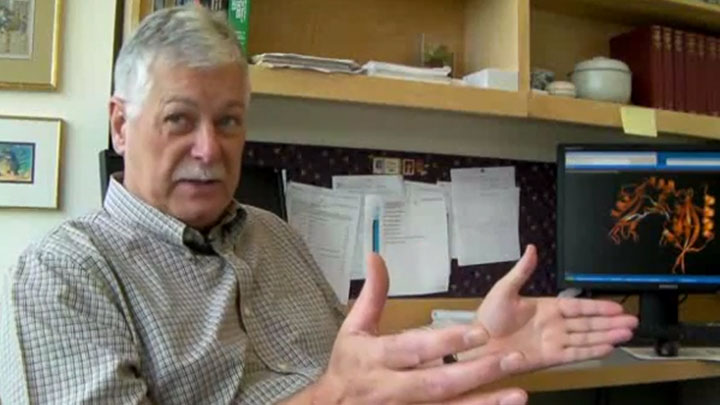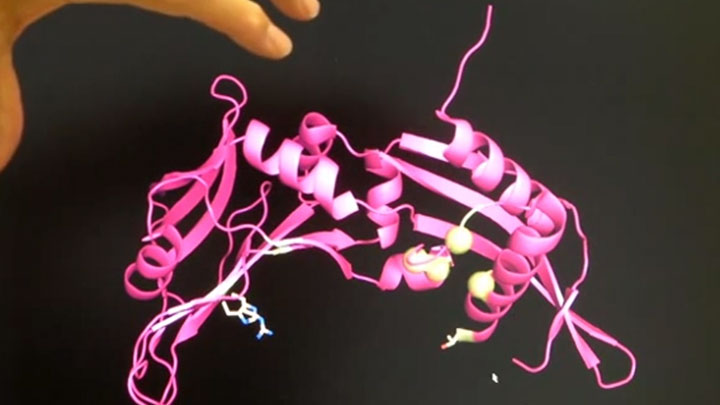NEB® TV Ep. 15 – Applications of Restriction Enzymes
Script
NEB TV. What's trending in science.
Deana Martin:
Welcome to NEB TV. Today, I'm joined by Yvette Lyetun, who is an associate scientist here at New England Biolabs. Hi Yvette.
Yvette Luyten:
Hi Deana.
Deana Martin:
And we are talking about all the different ways that you can use restriction enzymes. In our Science in 60, Yvette is going to give us a high level overview of these applications. And then, we'll hear from some of our other research scientists about these applications in a little bit more detail. Are you ready?
Yvette Luyten:
Ready.
Deana Martin:
Great.
Science in 60
Yvette Luyten:
Restriction enzymes cut DNA at specific sequences, and their discovery helped to usher in the era of molecular cloning. However, today, restriction enzymes are used for much more than just cloning. Researchers continue to find new applications for these enzymes. For example, they're used to help fluorescently labeled DNA for optical mapping. They're also used to digest formaldehyde fixed chromatin, which are then used in CHiP experiments. Restriction enzymes are also used to fragment genomic DNA, which is used in droplet digital PCR.
The type II S restriction enzymes, which cut downstream of their recognition sequence, form the basis for golden gate cloning technologies. Finally, nicking enzymes, which have been engineered here at NEB to cut just one strand of the double stranded DNA are useful in isothermal amplifications. Uses for restriction enzymes are limitless. Please let us know if you've heard of new and exciting applications. Woo!
Restriction Enzymes in Various Applications
Droplet Digital PCR
Nathan Tanner:
Restriction enzymes are useful in droplet digital PCR for a few reasons. First, with a large genome, like the human genome, it can be very long. And when you put that into the droplet generator, the presence of a lot of DNA can mess up the process of making droplets. So by doing a restriction digest you can break it up into manageable pieces so that the droplet generation works.
Second, for applications like copy number variation, you might have more than one copy on the same molecule of DNA, and to get an accurate quantitation you wanna make sure to cut that up into individual discrete pieces for accurate quantization.
Learn more at neb.com/DropletDigitalPCR
Restriction Enzymes in Optical Mapping
Jeremy Foster:
Immobilized DNA is digested with a restriction enzyme, the fragments are stained, and then finally visualized under a microscope. Identification of overlaps between the restriction patterns of different individual DNA molecules leads to the assembly of an optical map that eventually will span an entire chromosome.
With around 300 restriction enzymes to choose from, it's relatively easy to select the specificity that gives the optimal cut site frequency for the genome under investigation. An alternative variation of optical mapping using nicking endonucleases. In this instance, the DNA is treated with a nicking enzyme to nick just one strand of the DNA and the nicked side is then filled in with a fluorescent nucleotide.
Learn more at neb.com/OpticalMapping
Restriction Enzymes in Chromatin Conformational Capture
Sriharsa Pradhan:
3C technology would need chromatin fixation, followed by restriction enzyme digestion and ligation and afterwards you have to isolate the DNA and perform quantitative PCR. The restriction enzymes used are to digest the DNA-protein complex from the chromatin and we always like for best cutting restriction enzymes, which are also known as frequent cutter and they should have insensitive to CpG methylation, which are predominant in the eukaryotic genome.
Restriction Enzymes in Isothermal Amplification
Dan Heiter:
Isothermal amplification uses nicking enzymes to nick just a single strand and then that nick gets translated by BST polymerase to get an isothermal amplification of your target. You can choose from a variety of nicking enzymes to detect your target of interest and this gene detection would be useful in point of care diagnostics for a long time to come.
Learn more at neb.com/IsothermalAmplification
Restriction Enzymes in Golden Gate Assembly
Becky Kucera:
Restriction enzymes are absolutely critical to Golden Gate assembly function. But it can't just be any restriction enzyme. It has to be a Type IIS restriction enzyme. Now, you remember that the traditional Type II restriction enzyme, like EcoRI, has a recognition site that it binds and cuts within that sequence. Type IIS enzymes are a little bit different. Type IIS enzymes have a recognition and binding site but then they reach downstream and cut further from that recognition site. Once all of the fragments of DNA that are going to be part of the final assembly have been cut by a Type IIS restriction enzyme, the recognition sequence is on a separate piece of DNA and the pieces of interest are flanked by nice four base overhangs that are going to anneal to the next fragment in the assembly because they have a complimentary four base overhang, and this process goes on and on until the entire assembly is made.
Learn more at neb.com/TypeIISTable
Deana Martin:
So Yvette, thanks so much for joining us today.
Yvette Luyten:
Thank you for having me.
Deana Martin:
And as Yvette mentioned earlier, if you have any applications that use restriction enzymes, we'd love to hear about them. Thanks so much for watching and if you have any suggestions for future episodes, please let us know.
Related Videos
-

What are Restriction Enzymes? -

Discovering New Restriction Enzymes -

How do restriction enzymes interact with DNA?

